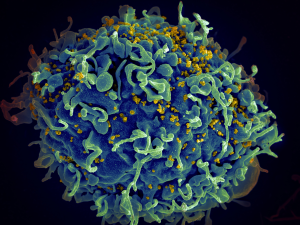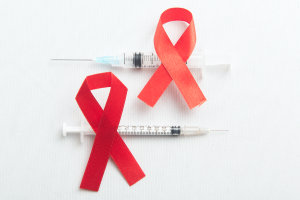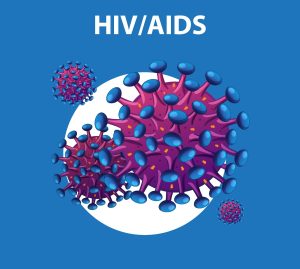Disclaimer:
This article is for information purposes only. It is not a substitute for medical advice or treatment. Seek medical care for your treatment.
What are HIV and AIDS?
HIV represents human immunodeficiency virus, it is a virus that develops HIV infection.
AIDS stands for acquired immunodeficiency syndrome. AIDS is the advanced stage of HIV infection.
HIV strikes and demolishes the infection fighting CD4 cells of the immune system. The loss of CD4 cells makes it hard for the body to ward off infections, illnesses and certain cancers. Gradually HIV can deteriorate the immune system and your health without proper treatment. With appropriate care and treatment immune system can bounce back.
Stages of HIV:
There are three stages of HIV:
- Acute HIV infection:
This is the initial stage of HIV infection and it grows within 2-4 weeks after HIV infection. Some people experience flu-like symptoms, like fever, headache and rash. In this stage of infection, HIV grows rapidly and spreads throughout the body. The virus charges and harms the infection-fighting CD4 cells of the immune system. The level of HIV in the blood is high during this stage, which increases the risk of HIV transmission. You will get strong health benefits if you start ART in this stage.
- Chronic HIV infection:
Chronic HIV infection, sometimes referred to as asymptomatic HIV infection or clinical latency, is the second stage of HIV infection. HIV still grows in the body during this stage, although very gradually. It’s possible for someone with a long-term HIV infection to demonstrate no symptoms at all. Without antiretroviral therapy (ART), chronic HIV infection typically advances to AIDS in ten years or more, though in certain cases it may happen earlier. ART users may stay in this stage for a number of decades. Those who take antiretroviral therapy (ART) as directed and maintain an undetectable viral load essentially have no chance of HIV transmission to an HIV-negative partner through sex, even though HIV transmission to others is still possible during this stage.
- AIDS:
AIDS is the final chronic stage of HIV infection. HIV has intensely harmed the immune system; the body cannot combat opportunistic infections. People with HIV and are diagnosed with AIDS if they have a CD4 count less than 200 cells/mm3 or if they have certain opportunistic infections. Once a person has AIDS, they can have a high viral load and are able to pass on HIV to others very promptly. Without treatment people with AIDS live about 3 years.
Prevention:
The appropriate way to lower the risk of HIV is to be mindful of how it transfers and rescues you during some activities. The most frequent ways to get HIV is through unprotected sex and sharing needles for taking drugs. Following these ways can lower your risk:
- Use latex condoms whenever you have any type of sex
- Avoid the use of condoms made from animal products
- Use water-based lubricants
- Don’t share needles to take drugs
- Get tested for other STIs. Other STIs can put you at greater risk for HIV infection
- Avoid drinking or intoxication because than you cannot protect yourself
- If you are at great risk of HIV ask your doctor if you should be taking pre-exposure prophylaxis
- If you think you have been exposed to HIV consult your doctor as soon as possible if you should take post-exposure prophylaxis
- Get tested to know if you can pass HIV to others
It is imperative to use condom in the right manner to safeguard yourself against HIV. Go for a male condom for any sexual activity that involves penis. Additionally, you can use internal condoms or dental dams to safeguard the anus or vagina. When performing oral sex, dental dams are thin, latex- or polyurethane-covered patches that you can place over your vagina or anus. You can use an internal condom, also known as a female condom, by inserting it into your vagina or anus.
Only one kind of condom should be used at a time. Never use an internal condom in addition to a male condom.
Other Preventive methods:
Other steps halt the spread of HIV are:
- Abstain from sharing needles:
HIV is spread through blood and can be reduced by using materials that have come in contact with the blood of HIV patient.
- Evaluate PrEP:
A person who is at a higher risk of HIV infection should discuss pre-exposure prophylaxis (PrEP) with their healthcare provider. It can lower the risk of acquiring HIV if taken regularly. PrEP is a pill-based medication that combines two different medications.
- Evaluate PEP:
A person who has been exposed to HIV should consult their doctor about getting post-exposure prophylaxis. PEP can lower the risk of shrinking HIV. It depends on three antiretroviral medicines given for 28 days. PEP should be started as early as possible after exposure but before 36-72 hours have gone by.
Can medicines avert HIV?
There are certain medicines that can ward off HIV in people who are at greater risk for exposure or who have been exposed. These are pre-exposure prophylaxis and post-exposure prophylaxis.
Screening for HIV during pregnancy:
During pregnancy you will be asked for a blood test to check if you have HIV as part of routine antenatal screening. If left ignored HIV can be transferred to your baby during pregnancy, child birth or breast feeding.
Conclusion:
If you are diagnosed with HIV, it is essential to know and understand that you can live a prolong life with the help of right treatment and proper guidance.




